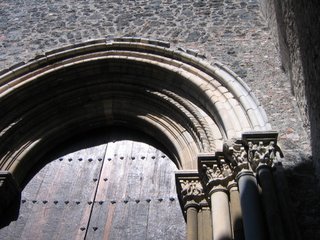




Maniace Bronte, Catania
The Castle of the Nelsons – We learned through our tour that the Castle was formerly a Benedictine Abbey dedicated to Santa Maria, then turned into a castle. The area where it rises was the scene of a battle between General Maniace’s troops and Saracens, the latter eventually driven from Sicily. The building was highly harmed by a quake sometimes at the end of the 12th century and successively rebuilt. It belonged to the Benedictine and the Basilian monks of the XII-XIII Century, and successively bestowed to the English Admiral Nelson in 1799 who helped the king, Frederico IV, put down a revolt in Naples. Nelson’s heirs sold it to the municipality of Bronte in 1981 to be a museum. It has a beautiful park with a charming church dedicated to Santa Maria di Maniace. The house has it’s original furnishings of the XVII and XVIII centuries. The one place in Sicily where on a historical tour you’ll find English writing under pictures and English books on display.





No comments:
Post a Comment